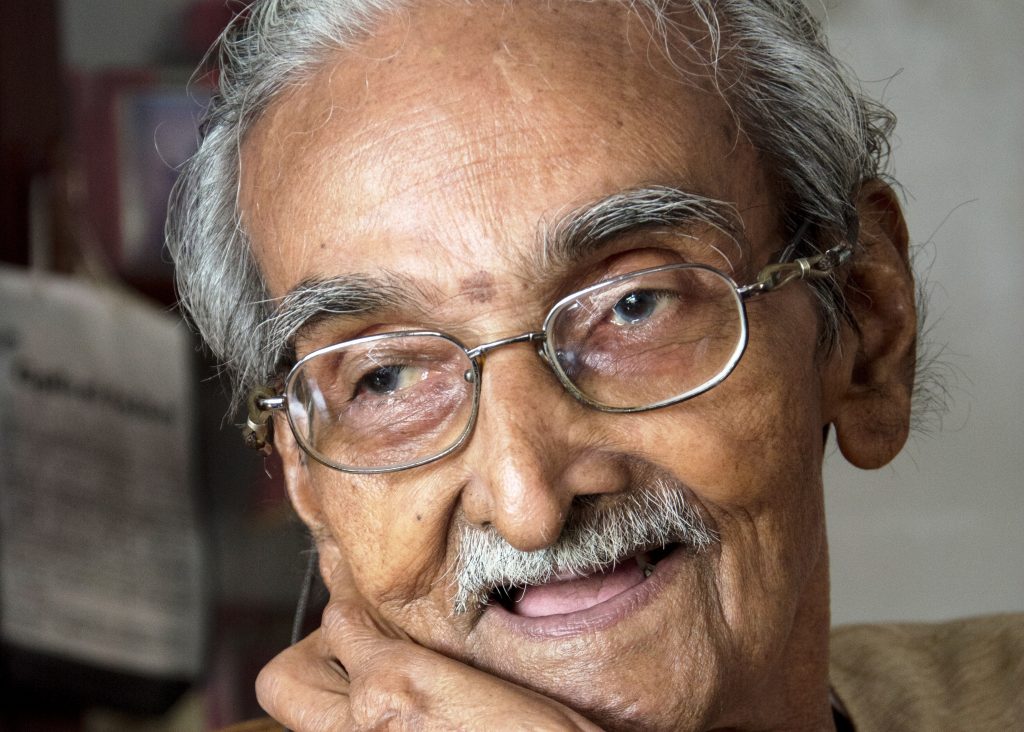Ramananda Sengupta was the last of the surviving pioneers from the Studio era of the 1930s and 40s. He is probably the only cinematographer who has worked with legends like Jean Renoir, Ritwik Ghatak and Mrinal Sen, apart from a host of other leading film-makers, actors and technicians.
Born in 1916, Sengupta studied in Shantiniketan for a couple of years but had to give up the course and return home after his father’s death. In the mid 1930s, he arrived in Kolkata searching for a job and came in contact with cinematographer GK Mehta at the Film Corporation studio, who took him under his wings. “He was my guru and whatever cinematography I learnt was from him. He taught me the basics and gave me the courage to work independently,” says Sengupta. But life at the studio was not easy. Sengupta’s initial work was to carry the camera boxes and the tracks and trolleys. His job also included cleaning and maintaining the equipment. But this introduced him to the world of the movie camera and he learnt loading the camera from a senior who had come in from the East India Studio.
At Film Corporation studio, he assisted in films like Asha (1938) and Dil Hi To Hai (1939). In the latter, he operated the camera independently while accompanying the director, Kidar Sharma, for some outdoor shots taken in Lahore. He independently shot his first film Purbarag in 1946, directed by Ardhendu Mukherjee, under Mehta’s guidance. During those days, the only two cameras being used were Michelle and Super Parbo. “While working with Michelle, we could only see half of the actor. So this involved a lot of guesswork that often told on the composition of shots. With the Super Parbo, you have to look through the film. In Bharat Laxmi Studio, I did the indoor shooting with Super Parbo and the outdoor with Michelle,” he reminisces.
Sengupta continued working with Mehta till his career took a turn after a meeting the legendary French film-maker Jean Renoir who was in the city to shoot The River (1951). Renoir chose Sengupta to work as the operating cameraman on the film, entirely filmed in India. Recalling the experience, Sengupta said, “Renoir was making a film titled The River in 1949 and I got to spend several months with him. It was an eye-opening experience, a learning curve that changed my conception of filmmaking and cinematography. Had I not worked with Renoir, I would not have grown as a cinematographer.” Renoir sent Sengupta along with his brother, Claude Renoir, who was the cinematographer for The River, to England to train in technicolor cinematography. Sengupta took this opportunity to become an observer at Sheperton, Denham and Illy Studios. “The cinematographic experts in technicolor taught me the finer detailing of make-up and how to judge proper make-up that changes during bright sunlight.” He reminisced how the white actors in The River alone had enjoyed the experience of being made up while the brown-skinned actors were not allowed any make-up at all. Actually, Renoir did not believe in make-up but he gave a base make-up to the white actresses only.
https://www.youtube.com/watch?v=qMsoz90t_3U
Over three decades as cinematographer, Sengupta photographed several Bengali films, many of them big box office hits. Some of his renowned films are Shilpi, Dakharkara, Nishithey, Headmaster, Kanna, Teen Bhubaner Pare and Raat Bhor, Mrinal Sen’s first directorial venture. But it was Ritwik Ghatak’s Nagarik that got him maximum critical acclaim. Nagarik established him as a cinematographer of much merit and helped him work with the best directors of Bengal. Filmmakers like Arabinda Mukherjee, Chitta Basu and Saroj Dey of ‘Aggragami’ teamed up with him to shoot their films and Sengupta was at his best working for them. However, he was also outspoken to a fault and was once even snubbed Bengali superstar Uttam Kumar for making a snide comment on his work as cinematographer.
Sengupta’s work as cinematographer would begin straight from the scripting sessions that he felt, laid the foundation for the design of the lighting scheme and made it easier. He paid minute attention to lighting the actors and objects in each frame, often lighting the character very patiently and changing the tones differently to try out different results. To get the right effect he desired, he would at times put brown foundation on the face of the actor as he did for Chhabi Biswas who did the title role in Headmaster, or shoot under a cloud-covered sky in Shantiniketan with only a lantern to get the lighting just the way he wanted it for Dakharkara. He also shared his knowledge and experience freely with his assistants, taking time to answer all their queries. Most of his assistants became excellent cinematographers later on. Among them are Dinen Gupta, Kesto Chakravarty, Sadhan Roy, Pintu Dasgupta, Biswajeet Banerjee, Alok Kundu, Dilip Ranjan Mukherjee, Soumendu Roy and Jagmohan Malhotra.
Sengupta’s last film was was Shrimati Hansaraj in 1976. He passed away on August 23rd, 2017 at the age of 101.


